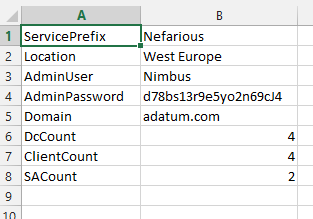Hinweis
Für den Zugriff auf diese Seite ist eine Autorisierung erforderlich. Sie können versuchen, sich anzumelden oder das Verzeichnis zu wechseln.
Für den Zugriff auf diese Seite ist eine Autorisierung erforderlich. Sie können versuchen, das Verzeichnis zu wechseln.
Advice can be given, ignored or taken. Over the next few weeks I'll write about some scripting practices I find useful and helpful. You can decide if these tips are for you...
When writing a longer script I often have to work on it as and when I can. These scripts tend to have lots of parameters and I like to perform testing again and again... and again.
Given the nature of my work, it's possible that a few days may pass before I return to a script and it's also possible that my laptop has been rebooted... so, to save set-up time, I'll often save parameters and values to a CSV file so they can be easily imported and splatted into a work-in-progress script.
What's splatting? A technique from the Ruby scripting language that allows parameters to be defined up front and then passed as one entity.
Here's what I do to get myself back up and running quickly after each reboot...
- Create a CSV file of parameters and values (you need only do this once)
- Dot source a script that adds the parameters and values to an OrderedDictionary object called $Properties
Load_Ordered.ps1:
$Properties = [Ordered]@{}
Get-Content .\Properties.csv | ForEach-Object {$Properties.Add($($_ -split ",")[0],$($_ -split ",")[1])}
- Splat the properties into the script I'm working on
Now, this doesn't look like much... believe me, it saves time and bother redefining parameters and values when I return to a script. You could even add the code to your profile...
Take it or leave it... you chose.
Comments
- Anonymous
December 18, 2015
Add a vendor-specific class indentifier for Cisco AP c1600 Series devices with PowerShell. Also add an option definition for the new class.


